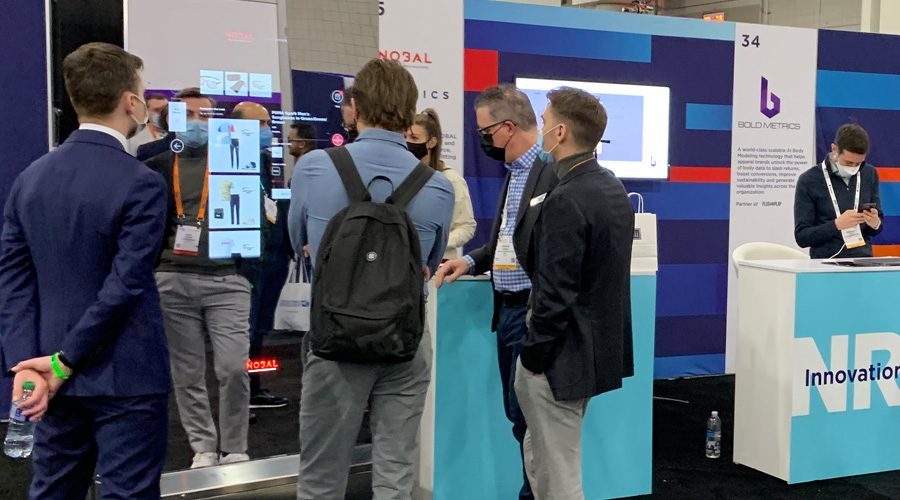Brick & mortar retailers need a new strategy and approach for attracting top talent and setting the frontline up for success.
Employees have always been critical to successful brick & mortar retail operations. As the face of a brand and the people responsible for executing in-store campaigns, the customer experience, and customer engagement, retailers have been prioritizing frontline staff more and more in recent years.
Yet the critical role employees play and the degree to which retail leaders need to prioritize them has never been more important. Brand leaders must rethink and reapproach how employees are set up for success in their roles. They need to be trained, supported, empowered, and listened to in new and elevated ways.
So, what is the current state of employee engagement in the brick & mortar retail industry, and how are we setting them up for success; and where do we go from here?
Finding and retaining talent – and good talent at that – has been a growing issue in the retail industry. As McKinsey noted in a recent report on fresh ways for retailers to get organized, the retail sector is struggling to attract a new generation of talent. The firm points to a broad 2017 study that found that retail was the fastest-declining sector among millennials as measured by talent attraction. The report goes on to talk about the need for retail transformation – including that most agile retail transformations in retail emphasize customer centricity and improved customer experience, so “frontline employees—the workers who have a direct and daily influence on shoppers—must be an integral part of the process. Therefore, finding and nurturing talent is crucial.”

On top of that generational challenge is a significant labour shortage post-COVID. Many retailers are finally returning to pre-pandemic levels of hiring, yet as The Financial Times recently reported, there are currently 1 million empty retail positions in the US right now – a challenge at any time, but even more so as we move back towards in person activities.
Together, these challenges have the ability to significantly impact the retail industry dramatically, and negatively. This is a risk retailers cannot take.
The pandemic effect
Aside from the role store employees play in strengthening brand connection and loyalty, their role has changed, grown, and evolved significantly with the onset of the pandemic. A report titled “The New Frontier for Frontline Retail Workers” , notes that the role of a frontline retail employee has evolved significantly and now includes an expanded set of skills largely as a result of the pandemic, including – among others – working with new operating models and being more flexible, more adaptable, and able to accommodate rapidly shifting customer preferences and behaviours. The pace of the recent evolution of the role of the frontline is like nothing the industry have ever experienced.
As the regulations evolve with the loosening of restrictions worldwide, the frontline continues to adjust and adhere to new and changing standards. With the frontline playing such a critical role, brick & mortar leaders need a new strategy and approach to engaging, retaining, and interacting with employees, while setting them up for success in a way that drives store performance.
- Elevate the company culture. Fostering a corporate culture that not only elevates the role of employees, but challenges and motivates employees in unique and empowering ways provides a foundation for change. Harvard Business Review (HRB) has discussed retail culture and the cultures that some retail leaders have created that have led to strong employee attraction and retention. In addition to good pay, four retailers they highlight – HRB, Costco, Trader Joe’s, and QuikTrip – have a corporate culture of “setting high expectations and creating conditions that encourage employees to innovate”. As HRB notes, that culture drives improvement and customer satisfaction, while making employees happy and eager to work hard. Brands can’t expect their frontline to deliver on their brand promise unless they are happy to come to work every day, and proactively defining a corporate culture is where it starts.
- Empower employees to provide seamless customer service. Employees are the face of a company, and potentially the most important aspect of a brand that a customer will interact with. Digital retail management platforms can be utilized to improve the customer experience. Technology driven features can make life easier for both HQ and the frontline. AI can be used to allows staff to execute their planograms by simply holding their smart phone camera up to a display, saving hours of back end work. Going digital and leveraging AI and Machine Learning techniques can let employees focus on customers rather than mundane tasks. This is empowering not only to staff members, but also the customer.
While some still equate automation with job losses, the reality is the opposite, with automation carrying the potential to positively impact the employee experience while allowing brand leaders to gain labour-related savings. Automation is shifting retail business models and driving competitiveness, while creating empowered employees who can focus their time on more meaningful work, and can leverage visibility into insights and analytics to help drive performance at the store level through stronger customer engagement. And with ongoing retail labour shortages across the US and around the globe, leveraging automation for tasks that previously fell to employees is no longer optional.
- Lead with communication and transparency. Frontline staff are being asked to do more than ever, and leading with open communication and transparency can lead to engaged and happy employees that drive value for your business. Employees want to feel like they are part of the broader team and not just someone that is focused on retail execution. Recent Forbes research uncovered that forty-one percent of customer experience c-suite leaders say the main obstacle to a stronger employee experience is a lack of shared senior management vision. It’s increasingly critical that employees feel that they are part of something bigger. Happy employees mean happy customers, stronger growth, and better performance.
The focus of many conversations around brick & mortar retail tends to be on the consumer experience, but retail leaders need to start prioritizing the employee experience in the same way. By focusing on culture, communication, and the strategic use of technology in brick & mortar retail operations, retail leaders can attract and retain top talent that care deeply about your customer and turning store visits into sales.







